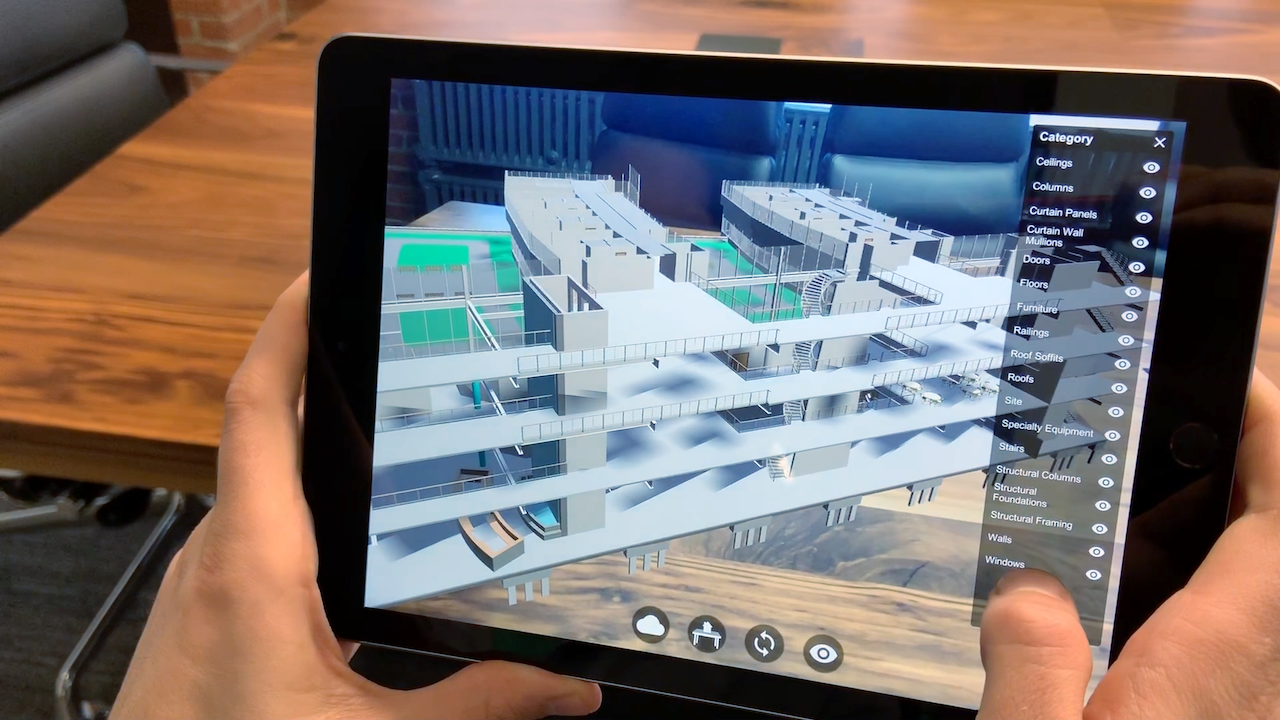Visualizing BIM and CAD projects in real-time 3D offers many advantages, but the workflow for creating these interactive, immersive experiences needs streamlining. That’s why we recently announced Unity Reflect, our new product that creates interactive real-time 3D experiences for any device from Autodesk Revit in one click. It helps every project stakeholder, from ownership to design and construction teams, make the right design decisions in real-time.
At the AIA Conference on Architecture (A’19) last month, we announced Unity Reflect, our new product for the architecture, engineering, and construction (AEC) industry. In a nutshell, Unity Reflect enables key stakeholders to review federated BIM/CAD models on the device of their choice and make better design decisions together. Unity Reflect is accessible to both technical and non-technical users.
In case you missed it, check out our previous blog post for more details on how it works or watch this 1-minute video.
Since taking the wraps off this product, we’ve demoed Unity Reflect to thousands of AEC professionals at A’19 as well as at Autodesk University London 2019. The industry response has been overwhelmingly positive. A few highlights:
- Architosh awarded Unity Reflect “Best of Show – Innovation” at A’19, calling it “vital to the democratization of BIM.”
- SPAR3D noted the product could be “a game-changer for Revit power users.”
- In the words of one design drafter: “This will be the future workflow for my organization.”
See what others had to say in AEC Magazine, BIMstore, and ENR. Unity Reflect is currently available in limited private release and will be available to the public in the fall. Make sure you stay in the loop on all things Unity Reflect by signing up for our mailing list below.
Unity Reflect: Key questions
As we approach the launch of Unity Reflect, we thought it would be helpful to share answers to the five most commonly asked questions we heard at A’19, AU London, and elsewhere.
How do I get early access to Unity Reflect?
While we would love to give access to everyone, Unity Reflect is not an open beta program or preview release, so only a limited number of AEC firms will be able to get early access. Please contact your Unity business development manager and he/she can put you up for consideration. If you are not a Unity customer, reach out here. Slots are filling up fast, so don’t delay!
Which design applications will Unity Reflect support?
We will support Autodesk Revit and Trimble SketchUp out-of-the-box and are developing an API to extend support to other third-party applications. While this will comprise the initial set of integrations available at launch, that’s just the start. We plan to release many more integrations over time based on the needs of our customers.
Can I use the Unity Editor in tandem with Unity Reflect?
You do not need access to the Editor to use Unity Reflect. The beauty of Unity Reflect is you don’t have to learn new software and can instead continue working from your go-to design tools. In fact, you don’t even need software development skills of any kind. With one click, Unity Reflect does all the complex work of preparing, federating, and transferring BIM/CAD data to any Unity-supported platform, making it easy to review models simultaneously on phones, tablets, computers, and AR devices.
However, if you are a Unity developer, you can bring this data into the Editor to customize and build upon these projects to create the best experience for your end users. Once your data is in the Editor, you can add anything Unity supports to your project, such as the Unity Particle System, Terrain to create landscapes, and Skyboxes to represent the sky of your choosing. You can also take advantage of Unity’s extensible platform to seamlessly deploy to over 25 platforms, including AR and VR wearables.
Does Unity Reflect have the ability to overlay BIM models localized to the real world?
Unity Reflect is built with AR Foundation and supports the latest and greatest features of Apple’s ARKit and Android’s ARCore. This allows a user to place a model in the real world in a localized way, but the alignment of models to the real world has to be done manually.
How does BIM filtering work?
Because Unity Reflect preserves BIM/CAD metadata, you can zero in on different parts of the central, federated model in real-time 3D (as shown in the image above). From the structural columns and framing to doors and furniture, Unity Reflect makes it easy to get an interactive, immersive 3D view of various building components to inform design decisions.
Quelle:
https://blogs.unity3d.com/2019/07/10/answering-your-top-questions-about-unity-reflect/?utm_source=linkedin&utm_medium=social&utm_campaign=aec_global_generalpromo_2019-07-10_aec-reflect-faq&utm_content=blog




